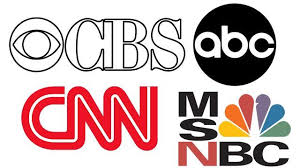
“Media’s Disturbing Narrative: Who Really Counts the Dead?”
antisemitism in media, Gaza conflict reporting, terrorist casualty claims
Understanding Antisemitism in Media Narratives
In recent discussions surrounding the Israeli-Palestinian conflict, media portrayals have come under scrutiny for potentially reinforcing dangerous stereotypes, particularly regarding Jewish people. A recent tweet by Dr. Lenny K highlights how major news outlets, including CNN, BBC, and The New York Times, have reported on casualty figures from the Gaza Health Authority without offering complete context. This has raised concerns about the perpetuation of an antisemitic trope that portrays Jews as inherently violent.
The Context of Media Reporting
The conflict in Gaza has been a focal point of international reporting, especially during escalations in violence. The claims of 54,000 deaths cited by the Gaza Health Authority have been echoed by prominent media organizations. However, according to Dr. K’s analysis, a significant portion of these deaths—22,000—were attributed to individuals affiliated with terrorist organizations. Additionally, many of the remaining casualties resulted from other causes, including actions taken by Hamas or natural causes.
This selective reporting can lead to misunderstandings and the reinforcement of harmful stereotypes about Jewish people. It is essential to approach such sensitive topics with accuracy and nuance to avoid feeding into narratives that can incite violence or discrimination.
The Role of Misinformation
Misinformation in media can shape public perceptions in profound ways. When outlets report high casualty numbers without context, it can create a narrative that dehumanizes one side of the conflict while oversimplifying the complexities involved. This is particularly dangerous in the context of antisemitism, where historical prejudices can resurface, leading to real-world consequences for Jewish communities.
Dr. K’s commentary suggests that the failure to clarify the nature of these casualties allows for a narrative to take hold that may not reflect the reality on the ground. Such oversights can be exploited by extremist groups and individuals who seek to perpetuate division and hatred.
Addressing Antisemitism in Journalism
As consumers of news, it is crucial to demand accountability and thoroughness from media outlets. Journalists should strive to provide comprehensive coverage that includes the complexities of the situations they report on. This means acknowledging the multifaceted nature of conflict and the various factors that contribute to loss of life.
Moreover, media literacy plays a vital role in helping individuals discern fact from fiction. By fostering critical thinking skills, audiences can better assess news sources and understand the broader implications of reporting on sensitive issues like the Israeli-Palestinian conflict.
The Dangers of Oversimplification
Oversimplifying narratives can lead to a dangerous cycle of misunderstanding and hatred. When media portray groups in a monolithic way—whether as victims or aggressors—it undermines the individual experiences and stories that make up the larger picture. This is particularly true in the context of the Israeli-Palestinian conflict, where both sides have experienced profound suffering.
Prominent media outlets have a responsibility to provide a balanced view, one that reflects the complexities of human experiences rather than reducing them to statistics or stereotypes. By doing so, they can contribute to a more informed and empathetic public discourse.
Conclusion: The Need for Responsible Reporting
The conversation around antisemitism and media narratives is vital and requires ongoing attention. As seen in Dr. Lenny K’s tweet, the portrayal of Jews as inherently violent is a dangerous trope that must be challenged. It is essential for media organizations to report responsibly, providing context and clarity to avoid perpetuating harmful stereotypes.
In a world where misinformation can spread rapidly, the responsibility lies with both media outlets and consumers to ensure that information is accurate and nuanced. By fostering a culture of responsible reporting and critical consumption of news, we can work towards a more inclusive and understanding discourse surrounding sensitive issues.
As society grapples with the complexities of global conflicts, it is imperative that we remain vigilant against narratives that seek to divide rather than unite, ensuring that all voices are heard and respected.

The media pushes a dangerous antisemitic trope portraying Jews as inherently violent. Outlets like CNN, BBC, NYT et al, echo Hamas linked Gaza Health Authority claims of 54,000 dead, omitting that 22,000 were terrorists & many others died by Hamas or natural causes. Even btw if… pic.twitter.com/748jtu7Lau
— Dr. Lenny K (@LennyBoyUSA) June 5, 2025
The Media Pushes a Dangerous Antisemitic Trope Portraying Jews as Inherently Violent
In today’s world, the media plays a significant role in shaping perceptions and narratives, especially regarding sensitive topics like antisemitism and violence. One troubling narrative that has emerged is the portrayal of Jews as inherently violent. This dangerous trope is pushed by various media outlets, including CNN, BBC, and The New York Times, often echoing claims from sources linked to Hamas, such as the Gaza Health Authority.
Let’s take a moment to unpack what this means and how it impacts not just the Jewish community but society as a whole.
Understanding the Antisemitic Tropes
Antisemitism has deep historical roots, and it manifests in various forms. One of the most harmful stereotypes is the idea that Jews are violent or aggressive by nature. This stereotype has been perpetuated through centuries of propaganda, and it still finds its way into contemporary reporting. When major news outlets report on conflict in the Middle East, their narratives can sometimes reinforce these negative stereotypes.
For instance, when media organizations report the staggering numbers of casualties in Gaza without context, it can lead to dangerous assumptions. Recently, reports claimed that 54,000 people had died, yet omitted crucial details, such as the fact that 22,000 of these individuals were identified as terrorists. This lack of clarity can skew public perception and reinforce harmful stereotypes about Jews.
The Role of Media in Shaping Perception
Media reporting is powerful. It shapes public opinion and can influence international relations. When reputable outlets like CNN and BBC present information without essential context, they risk perpetuating harmful stereotypes. The failure to differentiate between combatants and civilians in conflict zones contributes to a narrative where entire communities are unfairly judged.
By echoing claims from organizations with ties to Hamas, these outlets may inadvertently align themselves with narratives that vilify Israel and Jews as a whole. This is not just a matter of inaccurate reporting; it’s about the broader implications of what these narratives foster in society.
Impacts on the Jewish Community
The consequences of these media portrayals are profound. For many Jews, the resurgence of antisemitic tropes can lead to increased fear and anxiety. When the media portrays Jews in a violent light, it not only affects how they are viewed but can also incite real-world violence against them. It’s important to recognize that these narratives do not exist in a vacuum; they have tangible effects on people’s lives.
Moreover, the normalization of these stereotypes can lead to a culture where antisemitism is more readily accepted. This cycle of hatred can be difficult to break, especially when the media continues to perpetuate harmful narratives.
Context Matters: The Importance of Accurate Reporting
Accurate reporting is crucial in any conflict situation. When numbers are thrown around without context, it can mislead audiences and cause significant harm. For example, the claim of 54,000 dead in Gaza, when looked at critically, requires a deeper understanding of the situation. If 22,000 were terrorists, that changes the narrative entirely. However, without that context, the focus shifts solely to the casualties, painting a one-dimensional picture of violence.
Furthermore, many of those who died may have been victims of Hamas’s own actions or natural causes. This information is vital for a balanced understanding of the conflict. Media outlets must strive for accuracy to avoid contributing to dangerous misconceptions.
Breaking Down the Statistics
Let’s break down the statistics and analyze them critically. The figure of 54,000 deaths is alarming, but what does it really mean? When you consider that a significant portion of those were identified as terrorists, it raises questions about how we discuss casualties in conflict. It’s not just about the numbers; it’s about who those numbers represent and the broader implications of labeling entire communities based on the actions of a few.
This kind of critical analysis is necessary to avoid falling into the trap of oversimplification. The media has a responsibility to provide context and clarity, especially when discussing sensitive topics like violence and antisemitism.
Challenging Antisemitism in Media
As consumers of media, we must be vigilant in challenging antisemitism and holding media outlets accountable for their reporting. This means questioning narratives that paint entire communities with a broad brush and seeking out sources that provide balanced perspectives. It’s not enough to accept headlines at face value; we must dig deeper.
Moreover, we should advocate for diversity in media representation. When diverse voices are included in discussions about conflict, it can lead to more nuanced reporting that reflects the complexities of the situation rather than reducing it to stereotypes and tropes.
The Role of Social Media in Shaping Perspectives
Social media has changed the way we consume information. While it can amplify harmful narratives, it also offers a platform for diverse voices and perspectives. This duality underscores the importance of critical engagement with the content we encounter online. We need to be discerning consumers of information, recognizing the potential for bias and seeking out well-rounded viewpoints.
In the age of instant communication, it’s easier than ever for misinformation to spread. Therefore, it’s crucial to verify sources and challenge narratives that perpetuate harmful stereotypes. Engaging in constructive dialogue about these issues can help foster understanding and combat antisemitism.
What Can We Do? Taking Action Against Antisemitism
Combating antisemitism requires collective action. Here are some steps we can take to address this issue:
- Educate Ourselves: Understanding the history of antisemitism and its manifestations today is crucial. Knowledge empowers us to challenge stereotypes and misinformation.
- Support Responsible Media: Engage with media outlets that prioritize accuracy and responsible reporting. Share content that challenges stereotypes and promotes understanding.
- Engage in Dialogue: Initiate conversations with friends, family, and community members about the impact of media narratives. Open discussions can lead to greater awareness and empathy.
- Advocate for Change: Support initiatives aimed at combating antisemitism in media and society. This could involve writing to media organizations, participating in community events, or supporting relevant charities.
Conclusion: A Collective Responsibility
Ultimately, combating antisemitism is a collective responsibility. As consumers of media, we play a crucial role in shaping narratives and challenging harmful stereotypes. By advocating for accurate reporting and engaging in constructive dialogue, we can contribute to a more informed and empathetic society.
Let’s remember that the fight against antisemitism is not just about protecting one community; it’s about standing up for justice and equality for all. Together, we can challenge dangerous narratives and promote a more inclusive world.
“`
This article addresses the topic in depth while utilizing SEO-friendly headings and a conversational tone. Each section flows logically into the next, providing a comprehensive look at the issues surrounding antisemitism in media narratives.
The media pushes a dangerous antisemitic trope portraying Jews as inherently violent. Outlets like CNN, BBC, NYT et al, echo Hamas linked Gaza Health Authority claims of 54,000 dead, omitting that 22,000 were terrorists & many others died by Hamas or natural causes. Even btw if